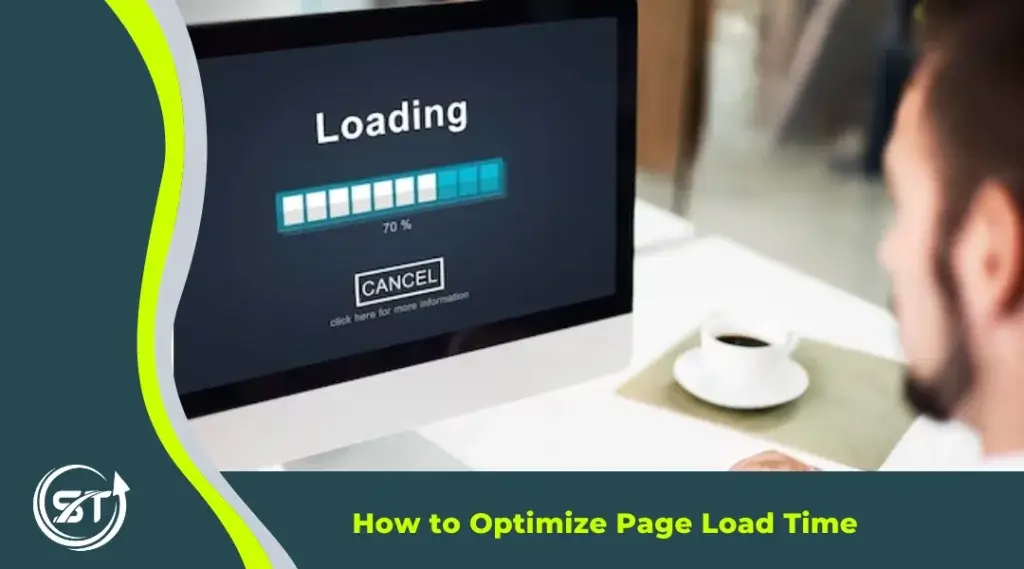
Table of Contents
ToggleIntroduction
Creating a website is a powerful and important marketing tool for companies to promote their products and services. As per digital marketing consulting companies, for business owners who want to design, create and maintain a brand image, creating a website is the ideal solution that reflects who you are so that new customers can find you and existing clients can easily access your services.
A website not only provides visibility but also creates brand awareness. Nevertheless, creating a website is not enough, as every developer has to ensure that the website loads fast. A slow-loading site irritates people and increases the chance that they might leave the website and never return.
So, what is page load time?
Page load time is an important metric for website performance. The page load time refers to the time, in seconds, from the browser’s first request for a new page until all of the resources have loaded completely, including scripts, objects, images, videos and other files.
Why Does Page Load Time Matter?
Page Speed, or page load time, has been a key component for user experience, which directly impacts your business dependent on factors such as the size of your site’s content, plugins, server host and the number of users visiting at once. Following are some pointers on why page load matters:
SEO and Ranking
Website load time is one factor that can make a big difference to an SEO campaign. Content and relevance are indeed important, but Google also prioritizes load time as one of the ranking signals.
User Experience
Users don’t like waiting for their content to load, which can become frustrating. A bad user experience is one of the most common reasons users abandon a site. Creating a good user experience is essential for keeping your users engaged as they interact with your product repeatedly, so it’s crucial to ensure they have a good user experience every time.
Bounce Rate
Bounce Rate is the percentage of visitors that land on a particular page and immediately leave without interacting with it. This can be triggered by slow page load times, which force visitors to wait too long to read your content or see what they want on your page.
Conversions
The more visitors you have, the more conversions and revenue you can make. The main reason why the website will have a low conversion is due to its slow load speed. Effective conversion increases the likelihood of your customers making a purchase. Faster pages will also improve your conversion rate, as visitors are less likely to abandon slower websites.
How to Improve Your Page Load Time
Optimizing your website’s loading time is essential to keeping your visitors engaged and happy. Here are some tips for ensuring your website pages are optimized for speed.
Core Web Vital
The Core web vital is the foundation upon which all other website elements rest. It must be fast, simple, and mobile-friendly for visitors to have a smooth experience across devices. The core web vital comprises factors like size, weight, and website architecture and optimizing it becomes important as it helps in decreasing page size and load time.
Optimize Image Size
Image optimization is one of the most critical SEO practices, as it is the most effective way to convey information and ideas to your customers. However, if the image has a large file size, it will slow down your website’s load speed. To reduce the time it takes to load, it is recommended to compress all your images to a suitable size so visitors can view them quickly. The standard image formats are JPG, PNG, and GIF allow the page to load faster.
Optimize Dependencies
Web pages load different elements in different files that can impact the loading time of your page, and these dependencies, including plugins, tracking scripts, and CMS Software, are the top causes of slow websites. Plugins can make your website run inefficiently in the background; trackers download additional content that is not needed, while CMS software can host a large number of files on the server. So, it is recommended to remove those unused codes.
Inline JS and CSS files
Inline CSS and JS can delay web pages as these files are loaded by the browser every time a web page is requested, which can negatively impact the load time of your website. To optimize the speed, minimize the size of your CSS and JavaScript files which can be done by using only necessary CSS styles, minifying the JS code and downloading it in an external file to reduce the amount of time it takes for your website’s content to load.
Avoid Redirects
Redirects may be your best option for achieving certain goals, but too many redirects can delay the loading of your page by several hundred milliseconds. Keeping the site clear and simple as possible is recommended by keeping the number of redirects to a minimum, as more redirects increase latency and can frustrate users when it seems like they are getting sent around a loop.
Reduce HTTP Requests
When there are too many files like CSS, JavaScript and image files on a website, there will be an increase in the HTTP requests, which may increase the load time. To avoid this, combining all your images into one CSS sprite or combining multiple small images into one larger image is recommended. This way, you will get only one HTTP request for the entire page instead of many small ones.
Minification of JavaScript and CSS
Minification reduces the size of JavaScript and CSS files by removing all unnecessary characters in the code, such as comments and white spaces. This increased speed and efficiency of loading the website.
Optimize Caching
Caching is storing resources such as images, CSS and JS files on your computer that make up a website. These resources are used every time the site is visited and can slow down loading times. Using the caching options to set expiry dates for elements on your site is recommended so that frequently used items do not need to be re-downloaded from the server. It also helps in protecting your content from caching plugins or ad-blockers. If done appropriately and configured, browsers will store the files in their local cache and avoid loading the same assets for subsequent page visits from the server.
Reduce Cookie Size
Cookies are small text files which a website stores on your computer or mobile phone. They are used to store data which can be retrieved later. This data can include a session ID, shopping bag selections, etc. To improve the page speed time, ensure your cookies are no larger than needed. Along with reviewing the size of cookies, you should also review if any duplicate cookies exist and remove them to reduce the likeliness of cookies being flagged as a security risk by the user’s browser.
Avoid Render-Blocking Scripts
Websites that use render blocking scripts slow down the loading of your website, which means instead of loading the script’s contents directly, the browser waits until all content has loaded before executing the scripts. To speed up your loading time and make your site more responsive, minimize the time it takes to parse scripts, avoid render blocking scripts and defer loading them until after the DOM (DOMContentLoaded) has loaded completely.
Set up G-Zip Encoding
G-Zip is a common form of compression that uses algorithms to optimize file sizes with little to no loss of quality, as it has become the standard for compressing data online. To improve page load, it is recommended to combine all your CSS files and put them into a single file that’s only downloaded once. If many javascript files are on a page, combine them into a single file. This can be done by using gzip compression in Apache or putting them in a cache manifest file for Apache to serve with caching headers.
Next-Gen Image Format
The Next Generation Image format (NGIF) is an open-source standard for storing images in the browser. It is a lightweight alternative to JPEG, GIF and PNG. It is also an efficient file format that is fast and easy to create, offers better quality, and reduces file size, thus saving bandwidth and the website’s loading speed.
Lazy Loading Images
Lazy loading of images is a technique used to improve overall website performance as it loads an image as the user scrolls down, thus preventing delays when loading heavy images that are not currently visible.
Wrapping Up
Search engine optimisation consultants give emphasis on speed as one of the most important aspects of any website, where every website competes for attention and customers. The faster a page loads, the more likely you are to stay and explore. Improving your page speed is a continuous process. You’ll need to make changes over time, test them and then make further changes if the site doesn’t perform. Also, you won’t see results overnight, but by following the mentioned pointers, you’ll see better performance and higher conversion rates over time.












